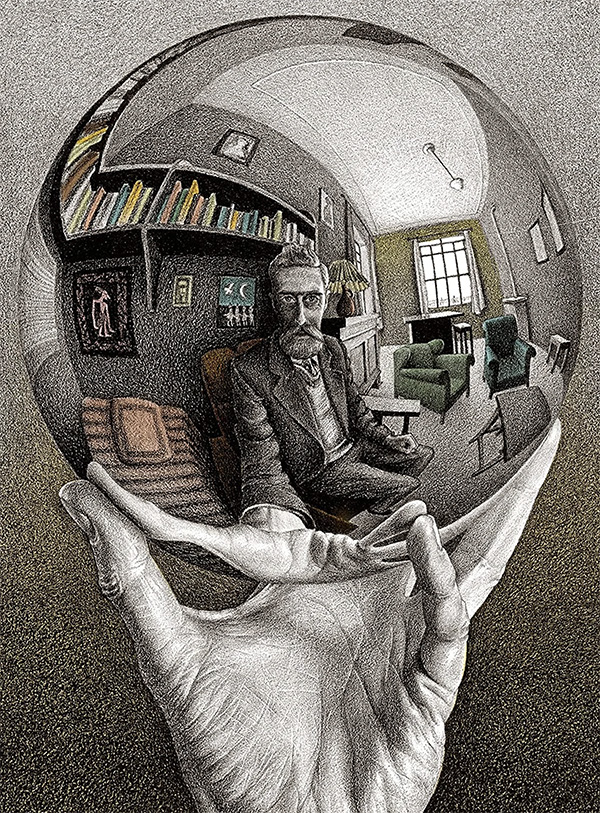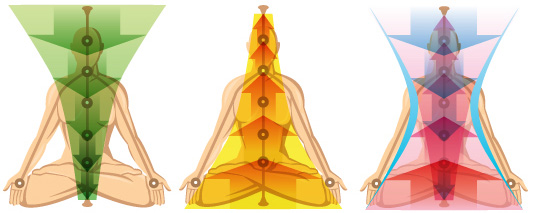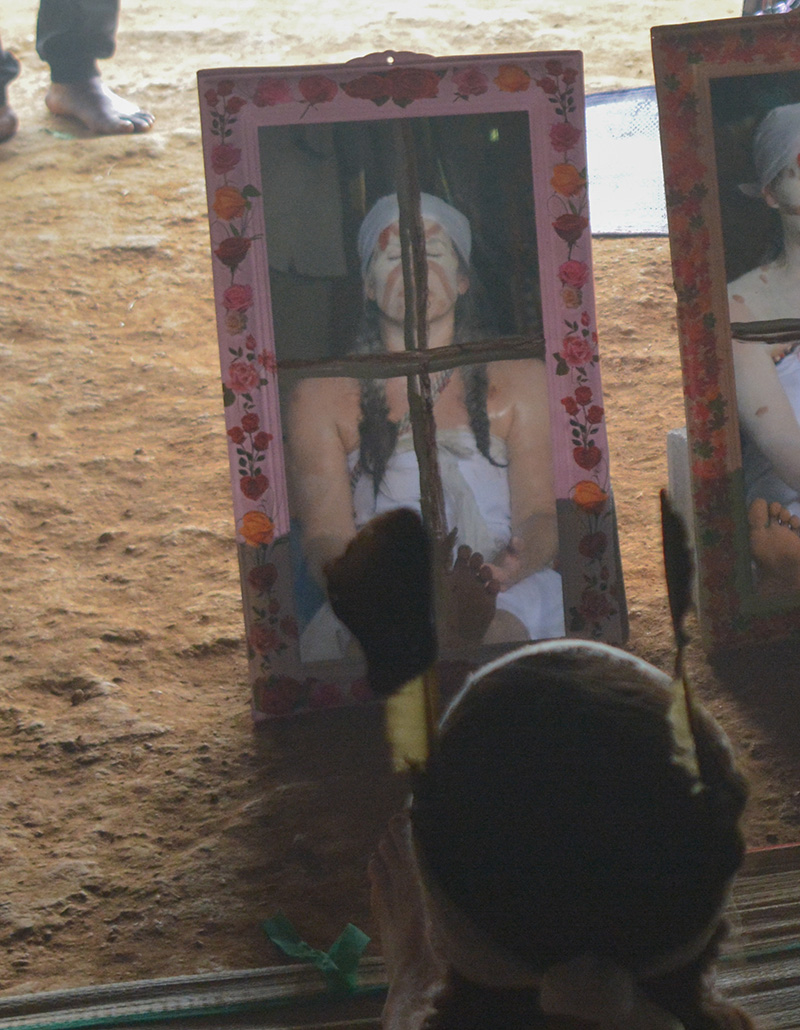Meditation with iboga
Iboga Meditation is the act of dissolving energetic structures/densities and dissolving the sense of self. These 2 items should remain in balance
In the beginning, the dissolving of densities comes in the form of releasing stress, such as emotions, problems, ethics, and oppression. Over time, it transitions into just feeling the densities rather than focusing on the stories attached to them.
Self-inquiry is the other side of the balance. At first, it may seem more mental, but with practice, it transitions into a pure sense of self, which dissolves in a similar way as densities.
When both are no longer present, life and joy remains.
This is the goal of meditation, the freedom and the simple enjoyment of life.
Energetic tools like kundalini tantra, plant medicine, self-inquiry or rebirthing can speed up the process. Among them, iboga is the most effective.
So how to meditate prior to, during, and after an iboga ceremony
Reading this text you will immediately recognise that this information is not from Gabon, but from Tibet and India. The simple reason behind this is that there is no real meditation technique in Bwiti. Normally the iboga will do it's thing with or without meditation. But lets look at the facts...
How many saints and masters did Bwiti produce in the past 200 years and how many people have attained the rainbow body state in Gabon. Yes zero.
This means we have to use more effective tools.
Lets look at these tools and explain them a bit in eastern terms
Iboga is like the fire of a candle. You can try to steer the fire or manipulate it, but in the end, the fire will dissolve the wax of the candle. The wax is basically all your traumas and dramas, including the ego.
So knowing this, there are ways to speed up the burning process. Obviously, more iboga means a bigger fire, but there are also meditation tools that can help you go to the root faster or let the fire do its job more stably and quickly.
These tools boil down to three fundamental tools that work effectively with iboga:
Fully experience whatever arises.
This is called Vipassana. Basically, it entails that you do not attempt to resolve or flee from what you observe or feel. Remain present with the emotions that surface. You can write up the emotions and blockages that you know are bothering you and take them with you into the ceremony.
This can involve simple emotions like anger, aggression, loneliness, bitterness, misery, disgust, annoyance, guilt,
confusion, discomfort, sadness, sorrow, disappointment, apathy, despair, alarm, jealousy, insult, evil, etc. Let the iboga energy enter these emotions and burn them until they are no more.
Now, how do you fully experience something? Well, you feel it, so feel it and stay with it. Maybe you can even locate it in or around your body. That is all. Stay with it until it dissolves. The breathing method below can speed up this process.
But iboga can also wake up more difficult emotions to fully experience, like fear (especially fear of death), desperation, anxiety, madness, numbness, a sense of futility, failure, persistent negativity, depression, or physical symptoms like difficulty breathing, pain, losing your sanity, etc. All this should also be fully experienced until it dissolves. Fear is the biggest by far and can take the whole ceremony to handle, but if you do, you are freed from prison.
Iboga can also bring up what seems like impossible stuff to experience, like feeling nothing, emptiness, or wanting to stop the process, etc. All this is stuff from the mind that tries to survive. You can fully experience this as well.
Even more challenging are the visuals and belief structures. You must fully immerse yourself in the visuals until you become the visuals, not merely an observer. The same applies to entities, demons, or bad souls/spirits; you must fully experience them
until you merge with them, leading to their dissolution. The difficulty with entities lies in the reluctance to merge with them due to the belief that they possess a form of consciousness and are not merely energetic constructs. In other words, a belief structure.
Once you acknowledge that they are simply energy, the concept of the entity dissolves. If a thought arises expressing disbelief, fully experience that thought as well. Do not think or try to solve it or listen to it, but experience the energy of it.
The source of thought is you, the ego. So ask the question: How do I create this thought and where does it arise.
In other words, a belief structure can be fully experienced until fully dissolved and truth remains.
In the end, truth is not something that can be experienced, nor believed in. You live the truth. Let this sentence sink in and give it time...
If an experience persists after you have fully experienced it over a long period of time, it is most likely not yours. In such cases, ask the question: To whom does this (emotion, problem, blockage) belong to. Often, you will trace it back to your parents or grandparents. Experience the emotion as it exists within them and work to dissolve it there. If the emotion remains unresolved in them, delve into their ancestry, possibly going back as far as seven generations, until you find the source. Once identified, the entire stagnant energetic structure will dissolve in seconds, resolving issues that may have taken years to address.
Another less common situation can occur when an emotion persists because you insist on attributing it to a logical source, whereas it may stem from your time in the womb or even past lives. Be open to the source being anything, anyone, or anything and in any time, including the future.
If this is all too complicated, it might be worth doing a simple Vipassana retreat. There are many around the globe. This can be really helpful before engaging with iboga.
Dissolve the identification

The second fundamental tool is to explore the roots of all problems and karma and emotions, which is the self. Now you should have a good grasp on vipassana before engaging this. This practice, known as self-inquiry in Eastern traditions, involves fully experiencing your sense of self until it dissolves, allowing you to delve deeper until only the essence of life remains.
One of the ways to facilitate self-inquiry during an iboga ceremony is in front of a mirror, looking at yourself. This is a very effective method of self-inquiry, especially if you ask the question: "who am I"
But the best explanation is from south India, from Sri Ramana Maharshi. So let me explain his method.
Beginners in self-enquiry were advised by Sri Ramana Maharshi to put their attention on the inner feeling of ‘I’ and to hold that feeling as long as possible. They would be told that if their attention was distracted by other thoughts they should revert to awareness of the ‘I’-thought whenever they became aware that their attention had wandered. He suggested various aids to assist this process - one could ask oneself ‘Who am I?’ or ‘Where does this I come from?’ - but the ultimate aim was to be continuously aware of the ‘I’ which assumes that it is responsible for all the activities of the body and the mind.
In the early stages of practice attention to the feeling ‘I’ is a mental activity which takes the form of a thought or a perception. As the practice develops, the thought ‘I’ gives way to a subjectively experienced feeling of ‘I’, and when this feeling ceases to connect and identify with thoughts and objects, it completely vanishes. What remains is an experience of being in which the sense of individuality has temporarily ceased to operate. The experience may be intermittent at first but with repeated practice it becomes easier and easier to reach and maintain. When self-enquiry reaches this level there is an effortless awareness of being in which individual effort is no longer possible since the ‘I’ who makes the effort has temporarily ceased to exist. It is not Self-realisation since the ‘I’-thought periodically reasserts itself but it is the highest level of practice. Repeated experience of this state of being weakens and destroys the Vasanas (mental tendencies) which cause the ‘‘I’-thought to rise, and, when their hold has been sufficiently weakened, the power of the true Self destroys the residual tendencies so completely that the ‘I’-thought never rises again. This is the final and irreversible state of Self-realisation (aka Nima and N'Ganga in Bwiti)
Iboga is by nature a non-duel plant medicine and as such is the masterplant that deals directly with dissolving the ego. No other plant does this. Only Amanita approaches this, but not nearly as effective as iboga.
So the most effective and powerful meditation with iboga is self-inquiry. But this is not easy for everyone and if you cannot do this, iboga will still work and do the job for you, but slower.
So what are the identifications you could inquire if you do not know what to look for:
Identification layers
- I
- Me, my, mine
- Self
- Be
- I am
- yourself
- name
- I am the body
- I am this or that
- Awareness
- Existence
- Space, time, energy
- nothingness, void, don't know (knowingness layer)
- perceptions, physical and other
- who you are, including the observer
- Emotions (including memory of pain and unconsciousness)
- Memory including the ability to register
- reality (considerations)
- Basic charges: Trust, help, fear, loneliness, guilt, pain, desires, survival etc.
- Thoughts, thinking
- Advanced charges: breathing, biological fears, food, sleep, hot/cold etc.
For a very detailed explanation and understanding of this type of meditation and logic go to www.satsang-darshan.com
Once these layers are dissolved, the meditation called vipassana changes into what is called Rigpa in Buddhism.
This will happen automatically, but there are also retreats you can follow (click image below) or reading books about Rigpa meditation.
Breath
The third method is breath. This is called pranayama and the best pranayama is kriya yoga in combination with Rigpa, but a Rebirth session after an iboga ceremony does miracles as well. It is very simple the moment when you can feel and stay with energetic structures including the feeling of self and yes the self is just a feeling, nothing more.
It works as follows, when you fully experience a problem, emotion, feeling, pain, thought, energetic structure, energetic blockage or the feeling of self or beingness or I amness or awareness etc. let the breath move it to unlock it.
What do I mean?
With the in-breath you move the structure up and with the out-breath you move the structure down until the structure de-couples and dissolves. In the east this method is called Kundalini Kriya Yoga without mantra.

Now iboga energy and kundalini are one and the same thing. The more iboga, the more the kundalini awakens.
There is a whole section devoted to this subject.

During the iboga ceremony a mirror technique is used in Gabon to combine all 3 of these methods.
One of the greatest teachers who has ever lived, Ramalinga Vallalar, from south India, used the same method for 15 years day and night, however without the iboga. But this shows you how effective this technique is.
It basically dissolves all the identifications and those are the roots to all karma and blockages



